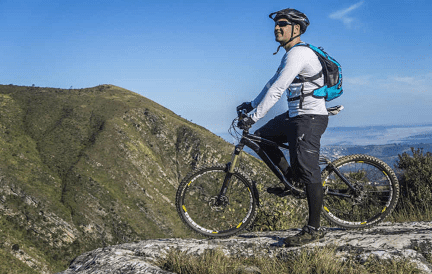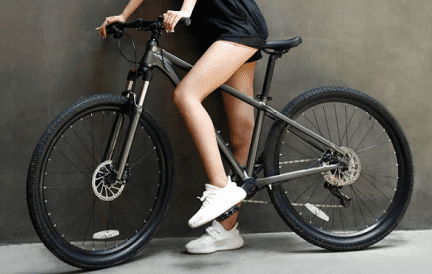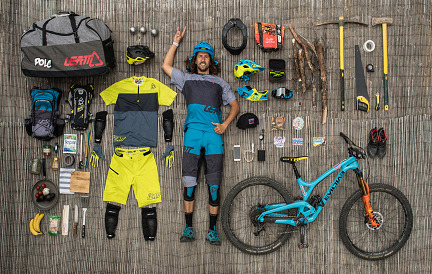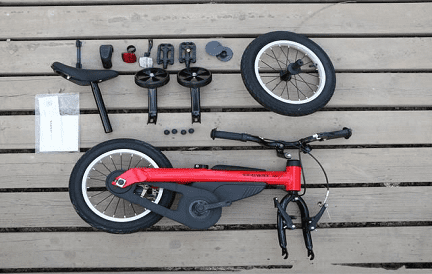Say no to dirty clothes! MTB front mudguard is the gear you need to have on your rides, in the worst weather! Any cycling enthusiast knows full well that preparing your bike for all seasons is paramount.
- Part 1:Product Introduction
- Part 2:Why Use This Product
- Part 3:Evaluation
- Part 4:First Impressions
- Part 5:Tutorial of Usage
- Part 6:Product Features
- Part 7:Product Overview
- Part 8:Product Advantages and Disadvantages
Part 1:Product Introduction
Riding a bicycle in the rain or on muddy roads means wet and dirty clothes and much-reduced comfort. During periods of heavy rainfall, it is worth equipping your bike with a good quality Front Mudguard, which will protect not only the bike owner but also the riders behind him from getting wet
How to Mount mtb Front Fender on MTB Bikes
All front fenders are mounted between the fork legs and under the crown to ensure maximum safety. This also puts the fenders in an optimal position close to the tires to minimize water splash. The simplest design uses plastic zip ties to clip the covers to the fork crown and fork legs. And you can keep them securely in place.

Part 2:Why Use This Product
Riding in rough off-road requires proper preparation and equipment. No matter if you are taking part in pro races or going for a relaxing ride on a mountain Peak, you should consider getting a front bicycle mudguard for your safety. Its task is to protect the shock absorber from sand and mud, as well as to protect your face in case of sharp stones escaping from under the wheels during a fast ride
Attach to Any Bike
However, fenders are now smaller and more aesthetically pleasing, so most cyclists will be happy to wear them on their bikes year-round. There are hundreds of Front fenders on the market, That you can easily have access to a million different types of fenders and so on! There are also many traditional designs of long, thin “fenders,” usually attached with a single quick-release insert under the forkhead tube. Such fenders, however, have only one attachment point and are often wobbly, noisy, and obstructive on technical trails.
Part 3:Evaluation
Mud is an integral part of extreme mountain life, and mudguard front mtb is an absolute must-have if you want to protect yourself from mud splashes. They can certainly make riding more comfortable in the worst weather conditions, protecting your eyes from dirt or keeping you dry for longer periods.
Fenders are Ideal for Mountain Bikes
They don’t have a fender hole from the factory. They’re easy to install, so you can use them however you want, whether it’s muddy weather or a sunny day. provides enough stability for riding through woods, fields, gravel, and dirt roads. front mud guard for mountain bike stay in place, never twist and don’t make any disturbing sounds, making them ideal for bike fanatics who want to be more focused when riding on extreme trails or muddy weather if the mud gets too far from the bike, they are easy to use and wash.
The practical design allows you to stop mud from splashing onto your helmet keeping you clean, dry, and preventing your goggles or glasses from flooding, so they provide effective protection from mud and anything else that will try to stick to your helmet, they are easy to use and remove, when riding they provide a strategic approach so you can see the road clearly at all times. Another great feature is that it reduces the amount of aerosol coming off the front wheel.
Another Important Feature
It reduces the amount of spray coming from the front wheel, not only protecting you against mud covering but most importantly, securing your bike in good shape as your front fork cables, seals, etc.
All the fenders tested were mounted under the fork suspension, but the space between the fork crown and the tire was limited. If you are using 29-inch wheels with tall tires, the fenders will be very close to the tires. As a rule of thumb, it is best to leave at least 18mm of clearance (about the width of your index finger) between the fenders and the tires to avoid friction.
After installing the mudguards, it is advisable to drain all the air pressure from the fork and compress the fork to maximum travel, so that the fork does not fall on the mudguards. All of these mudguards that have been tested are made from flexible polypropylene that will return to its original shape when bent or compressed. This allows them to be used in literally any weather condition.
Part 4:First Impressions
The construction of the front mudguard is very significantly limited to water and mud. You can expect to protect the buttocks and back, but for the thighs and calves is rather out of the question.
First Thing
Purchasing an MTB sports bike is clear, you need to be aware of this. Protection is at the standard level for fenders mounted on the seat pillar. We like the stability of this model. Sure, the fender works and wobbles slightly all the time while riding, but it still stays in one position. All three bolt-on points (the two adjusters and the Seatpost mount) don’t tend to budge while riding, and the fender doesn’t twist on the Seatpost.
That’s the most important thing, otherwise, you’d immediately lose the water and mudguard. Of course, the durability of plastic has its limits. The first mountain bike is truly unforgettable, no matter if we continue in this activity Choosing your first bike you should first of all bet on a reliable product made by a reliable company, which you can buy in a highly recommended bicycle store that employs specialists that help select the right gear that will help you on even the most difficult mountain paths.
Part 5:Tutorial of Usage
It is a fact that even when planning an idea or creating a bike, it is best to focus on different tests based on the requirements for different loads to guarantee the greatest possible safety while riding and to make optimal use of essential bicycle parts such as mudguards.
Front Mud Guard for Mountain Bike Consists of Two Parts:
Mtb front fender to the shock steerer tube with a peg. It has different sizes of pegs to fit the different thicknesses of seatposts, check the diameter of the seat tube beforehand to make sure the fender will fit your size, although it is impossible, better to be safe than sorry later.
Front mudguard with convenient snap-on/self-locking mount allows easy attachment and removal to front-wheel forks.
The mtb front guard is attached similarly to the rear one. First, it is worth putting it on the test, and then in places where it will be in contact with the paint, cover the shock absorber with clear protective film. After this procedure, we can mount it rigidly. Here it is also fastened with straps or sliders in three places. Velcro straps, two to the lower shock absorber shanks and one to the fork crown. It is worth starting with the shin and remembering at this point to stick on the fender soft rubbers, which are included in the kit and will be installed in the place where mudguard mtb front meets the lags.
The Simple Design of the Fenders
After lightly fastening the straps at the sides, we adjust the band at the top (it is worth cutting it here, as it will always be too long), which will set the clearance between the fender and the tire. Once properly adjusted, we fasten all the ties rigidly and the front end becomes ready to go as well. Mounting it is even simpler than at the rear, every next one will be done in a moment. The only thing is that the rear generally has a large tolerance for tire width and frame design. At the front, however, you can see the relationship that the lower the clearance between the shock and the tire (the height between the fork crown and the tire), the harder it is to give the fender plenty of clearance.
Mounted between the fork legs and under the crown for increased safety. This places the fenders in an optimal position close to the tires, minimizing water splash. The simplest design uses plastic zip ties to clip the protectors to the fork crown and fork legs, keeping them securely in place, and rally removable rubber O-rings to keep the fenders securely in place while clamping for quick, tool-free installation and removal. Even left-handed bob builders were able to install all the guards in this test in minutes.
Part 6:Product Features
Most cyclists can agree that there are not many factory fender fittings on the market, although small companies are slowly taking over the care of these important accessories. This usually applies to racing bikes – racing road bikes, MTB, or with an “aggressive” character – such as enduro.
Designed to be Practical
Properly designed and accurately mounted will provide us with flexibility, because already while driving the characteristic sound of the tire rubbing against the fender is practically inaudible
It is up to you to decide if you want to cover your bike with both fenders for both wheels or just one of them. What they have in common is the maximum tire width, which is up to 3 inches for both wheels, and a very quick installation process. The dock and the front and rear come with straps, a zipper pack, and clear protective stickers for the frame and shock. The kit is also very lightweight, with the rear weighing about 250 grams, while the front weighs about 150 grams. For mountain bike front mudguard, also get an adapter that is used to screw the front mud guard mtb to the fork crown
if there are mounting holes in it. In our case there were none, so we used a quick-mount with velcro. We would also like to add that the straps are so strong and wide, as well as easy to release quickly, that we resigned from attaching them with zippers. In our opinion, it makes no sense. Although it is possible, we get a package of zip ties from the manufacturer as well. We only see their use when we leave the bike in public places and fear theft.
Bike Industry
In general, it seems that the bike industry doesn’t want to use them where we “ride in sportswear” as well as on machines where they are potentially unnecessary. The fact is that fenders can get in the way. When we use these bikes for their intended purpose, we usually forgo the extra protection from water and mud. However, many riders and cyclists have a different opinion and simply want to wear fenders on certain days. The front fender is mounted on the shock’s horseshoe or under the main frame tube. It primarily protects the cyclist’s face and to a lesser extent their body. Unlike universal and traditional fenders, these models focus more on safety than convenience.
All mountain bike front mudguard are universal and idea. So you can be sure of mounting the lugs on any bike with any wheel size, except of course on fatter bikes. However, if you’re using extra-wide tires over 2.5 inches on a 29er bike, it’s worth double-checking the clearance to make sure there’s enough room.
Part 7:Product Overview
The most important part of mountain bike design is the front fender. They prove useful in extreme off-road riding conditions when a cyclist is not only dirt but also to dangerous chipping stones or sticks. MTB mudguards differ in construction from traditional bike mudguards.
Shorter and Lighter
They tend to be shorter and lighter, so they don’t get in the way of mountain biking. Their minimal footprint and weight make them a no-brainer. Fixed variants are similar in terms of stability, but we advise against them on real mountain trails. Slightly less safe are variants with quick-release fasteners – it is worth it before buying to carefully analyze the method and stability of the attachment. A majority of branded models will prove useful during MTB mountain Trips or training during the winter season.
The other side of the coin is the main role of mudguards, the quality of action in terms of shielding us during muddy obstacles, and our bike itself from water and dirt flying from under the wheels. Looking from the perspective of sport or tourist riding you can be perfect in one hundred percent. You can safely go for a bike ride in wet, muddy conditions. Then come back from it in the comfort of being relatively clean, with little dirt on your body. The silhouette is well protected, and the only area that remains unprotected is the feet and their surrounding areas. Occasionally, we can also expect a little splash from the front wheel – more so around the shoulders and face. There won’t be much of that, though. Protection from puddle water alone is effective.
Part 8:Product Advantages and Disadvantages
Fortunately, it has more advantages than disadvantages.
Pros
So the mountain bike front fender has extremely high resistance to rough terrain and harsh conditions. They have the flexibility to provide comfort in the toughest of times. With them, you can ride for real and with satisfaction is their greatest advantage.
Front mudguards support you to maintain your bike in good shape. Because they take on a large part of the dirt, water, mud that accompany riding on wet, off-road trails. But the biggest advantage is their compatibility, you can easily mount them to virtually any bike. Thanks to the possibility of quick disassembly, they do not disfigure the bike when the sun dominates the weather forecast. However, it is worth choosing a solid model from a well-known producer. The durability of fastenings of cheapest products leave much to desire. Specially if you use a mountain bike according to its purpose (muddy environment or other extreme conditions). Mudguards of this type also provide decent protection against mud. But of course, they are inferior to solid models in this respect. The lower parts of the body and the bike itself remain exposed to water and dirt from under the wheels.
Besides, If you want to look good on your bike, comfortable, dry, and clean clothes.
Cons
mtb front mudguard offer much less protection from water and mud than their traditional and universal equivalents. It dicates by the narrow practicality of this piece of equipment on a bicycle that it should handle rough off-road. Make it Simpler, in real mountain riding mudguards may simply get in the way. First of all, if you had real, full mudguards, space for mud is getting off limited. Then extreme mud clogs the tire and blocks the wheel. Besides, on hills, there are huge bumps that could cause the fenders to swing to all sides. So even break them, you also can it. Another disadvantage could be pulling something between the wheel and the fender and damaging some part of the bike. Adding to the disadvantage is the increased weight of the bike.
I believe that you have your obvious thoughts about how to choose a mountain bike front mud guard. Hope it helps!









